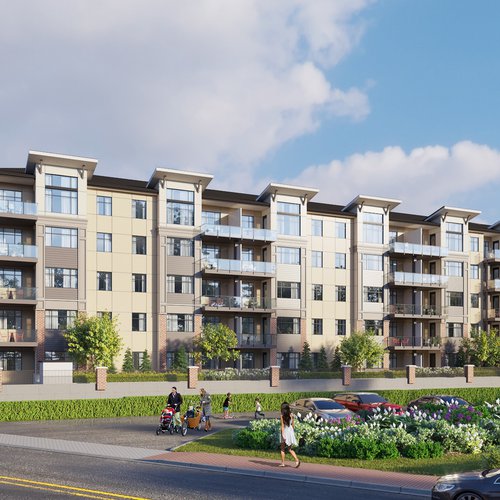March 7, 2024
Giving an idea form before the first brick is laid is more than just a step in the building process; it is an important part of making something. This is especially true when it comes to creating places to learn, since the walls that will hold future learning will be shaped by ideas from today. Architectural models are very important to this process because they connect ideas in your head with real things. How do building models help shape the places where kids will learn and grow, though? What exactly goes into planning new schools? Let's start this amazing journey of making things.
The Essence of Architectural Renderings
First, let's unpack what architectural renderings are. For the most part, they are the artist's impressions of a building or place before it is built. They are usually made with advanced software. But to consider them merely as drawings would be to overlook their profound impact. They are, in essence, a form of visual storytelling that conveys not just the physical attributes of a proposed structure but its soul.
The Vision Behind Designing Educational Spaces
The Role of Innovation
When it comes to educational spaces, the stakes are indeed high. These places aren't just buildings; they're where the future is made and are meant to excite, support, and encourage learning. Innovative ideas are at the heart of these plans. They help builders go beyond standard classroom models and make rooms that can adapt to new technologies and ways of teaching.
For young architectural students embarking on their educational journey, this innovative mindset is not only applied to the physical design of spaces but also extends to the way they approach their studies, including the often daunting task of academic research. In our digital era, such resources that will close the "write my research paper" request have become invaluable tools to help students manage their workload by offering assistance in conducting the thorough research necessary to design and engineer educational spaces. These services are emblematic of how innovation permeates every facet of education, enabling students to navigate their academic responsibilities more efficiently.
Blending Functionality with Inspiration
The goal is to create places that are useful and exciting. It's like going to a school where every hallway, classroom, and corner is meant to interest you and make you want to learn more. In this case, architectural models are helpful because they show how these concepts can be put into action in real life, creating more interesting places to learn.
The Process of Crafting Architectural Renderings
Getting a thought down on paper is both an art and a science. Before you start, you need to know a lot about the project's goals, the kids, teachers, and staff who will use it, and where they will use it. Architects use these needs to make rough sketches, which are then improved over time to become full designs.
Embracing Technology
More realistic and advanced building renderings can now be made with the help of cutting-edge software. With these tools, architects can play around with light, texture, materials, and even people, by adding them to the renderings to give them a feeling of size and activity. As a result? A fascinating look into the places of the future, where every part is planned with a purpose in mind.
Architectural Renderings as a Collaborative Tool
A great thing about building drawings is that they can help people work together better. Not just teachers and kids, but also builders and people in the neighborhood can understand what they mean. It's important to agree on this so that you can get feedback, make smart choices, and make sure that the end place meets the needs of the people who will use it.
Looking Towards the Future
Sustainability and Adaptability
The ability to alter and last are crucial for developing learning spaces in the future. New ways to save money and resources and make learning places that can change over time can be seen in architectural drawings. They help people involved see how these ideas can be incorporated into the design.
The Impact on Learning
The ultimate test of these designs, however, lies in their impact on learning. Can these future spaces enhance collaboration, creativity, and well-being? Architectural renderings show what could be possible when careful, inspired design is used to change the way we learn.
Conclusion
Architectural models are helpful for seeing what a place of learning will look like, and they can also help you come up with new ideas. So, they force us to come up with new ways to design learning places that are both useful and inspiring, and that are both long-lasting and adaptable. When we look at these renderings, we don't just see buildings; we see how schooling will be in the future. This idea has the power to change not only places, but also the minds and hearts of people who will come after us. To make a rendering come to life, people must use their imaginations, work together, and have hope. This is the process of creating the classrooms of the future.










